Eli Schwartz
More posts from Eli Schwartz
Amazon dominates the top ranking positions of Google for tens of thousands of ecommerce queries, but there are plenty of products in newer shopping categories where Amazon has not yet achieved SEO supremacy. Retailers in nascent verticals have an opportunity to follow Amazon’s SEO playbook and become the default ranking ecommerce website.
Achieving this success can be done purely by focusing on on-page SEO without the need to build a brand and a backlink portfolio that rivals Amazon.
For those unfamiliar with mechanisms of SEO, there are essentially two streams of SEO tactics
- On-page SEO – This is anything to do with optimizing an actual page or website for maximum SEO visibility. Within this bucket will fall efforts such as the content of a page, metadata, internal links, URL/folder names, and even things like images.
- Off-page SEO – A key component of Google’s algorithm is the quality and sometimes quantity of the links from external sites that point to a page or website. At a high level the better backlinks a page or website has the more authority the page has to rank in search.
On-page SEO teardown
Delving into just their on-page SEO, their tactics can be divided into four distinct areas which we will go through in detail.
If you are following along with this process, make sure to log out of your Amazon account or open up an incognito window. Google only views the logged out version of the site, so all of Amazon’s SEO efforts are focused there.
Off-page SEO not necessarily required
Before we go further, here’s a bit more about why off-page SEO isn’t required here.
As one of the largest brands in the world, Amazon certainly has a unique ability to garner backlinks that any smaller competitor would not have, but this is not the magical elixir some would think it is. Backlinks are only a component of the algorithm and better performance on areas like relevancy and intent matching will always beat out a better-linked page.
For example, the query “Michael Jackson”, Amazon is nowhere in the top 10 results and some of the ranking results have significantly fewer links than Amazon.com with nearly 4 billion backlinks according to Ahrefs.com.
This is because, for this query, a shopping site like Amazon is not considered to be relevant. As soon as a shopping intent keyword is appended to the query like “Michael Jackson costume” suddenly Amazon does rank.
Interestingly, Amazon is the second-ranking result behind a site that specifically sells costumes likely because Google has determined that a costume site is more relevant for a searcher looking for costumes. This underscores the point of this guide that with good SEO Amazon can be beaten and Amazon does not have an innate SEO advantage because of their brand.
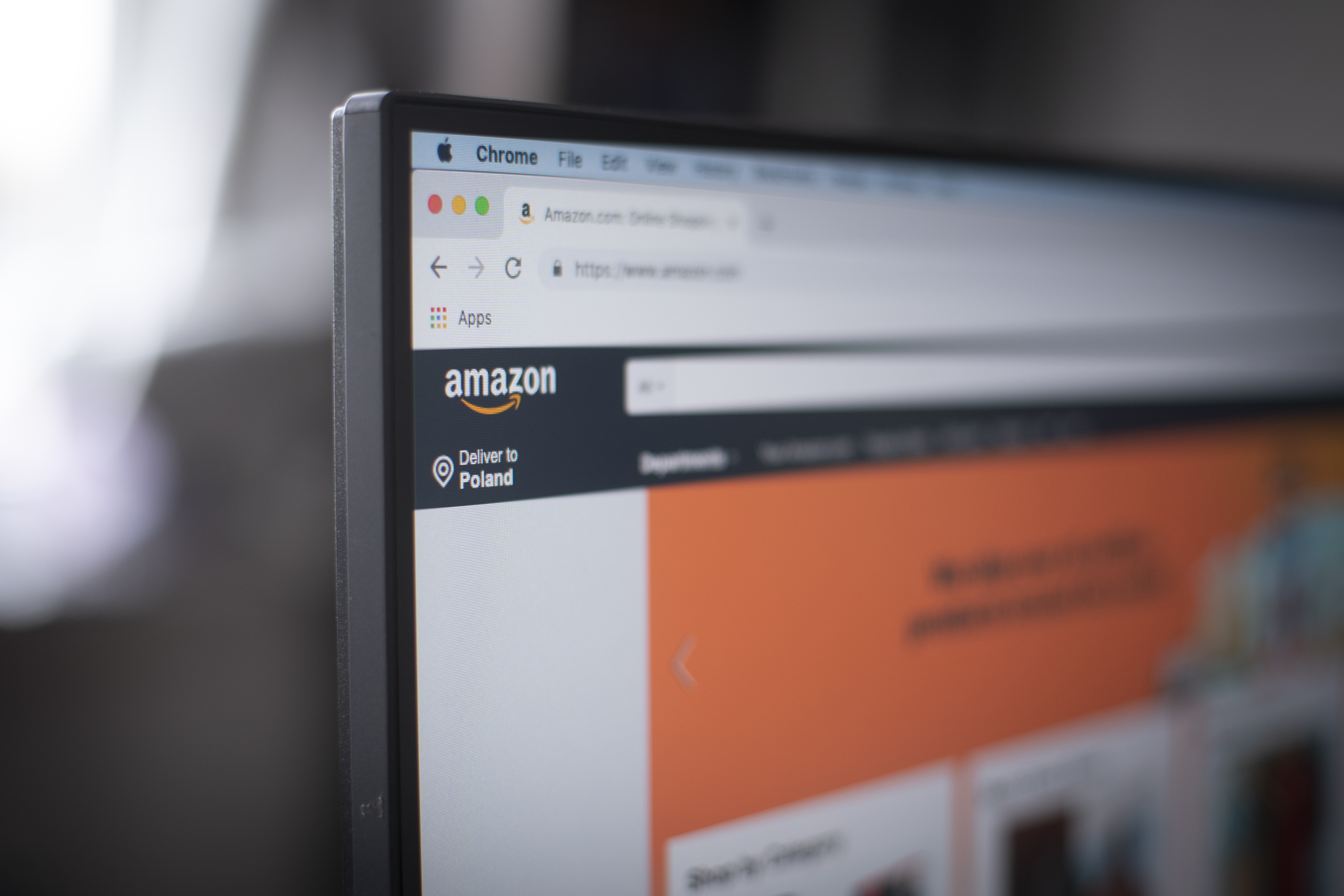
Content
Content on Amazon is comprised of what they choose to put on the homepage, category pages and specific product pages. From an SEO standpoint, while the rest of the ecommerce world invested and continues to invest in category pages (think the index page for all products in a category), Amazon places all of their SEO investment into creating killer product pages.
Amazon’s page not only pulls all available text from the manufacturer, but they add content unique to Amazon such as comparisons, tech specs directly on the page, and finally reviews. Again reviews is an area that Amazon has been perfecting for years while competitors neglected their own SEO efforts.
A big thing Amazon does right is that they appear to have a better flagging system that does not allow funky titles to make it into their feeds. As a result, all of their important on-page meta tags of titles, H1’s and meta description are built with minimal errors.
Conduct a search for “discontinued” or “broken” on any other competitors and you will not be as impressed.
SEO is not just focused on text search, as images are content too. Every product on Amazon has alt text (initially created for the visually impaired, but now useful for image search) with the full product title included.

This helps for a number of reasons:
- If someone were doing a product search in Google images (or any image search engine) they would be able to find the Amazon product.
- When someone finds a product on the web and they want to do a reverse image search to learn where to buy it, Amazon is eligible to be found.
- As more people start using visual search tools like Google Lens, Amazon is one of the top results.
SEO site Architecture
Everything about the way Amazon’s site was built was constructed for SEO. Early on in Amazon’s SEO efforts, they had links to all of their categories right on their homepage, but now they only do this within Javascript which has arguably benefits for SEO. This is the basic optimization that most sites will implement, but the real power of
Amazon’s architecture is in their taxonomy. From the beginning, Amazon was creating the taxonomy for every product in the world, and it is this site structure that makes so easy for both users and of course search crawlers to always know exactly where they are and how to find a new product without needing to search.
Compare the difference between Target’s baby category page and Amazon’s.
Amazon has category links on the top of the page, popular products and then brands.
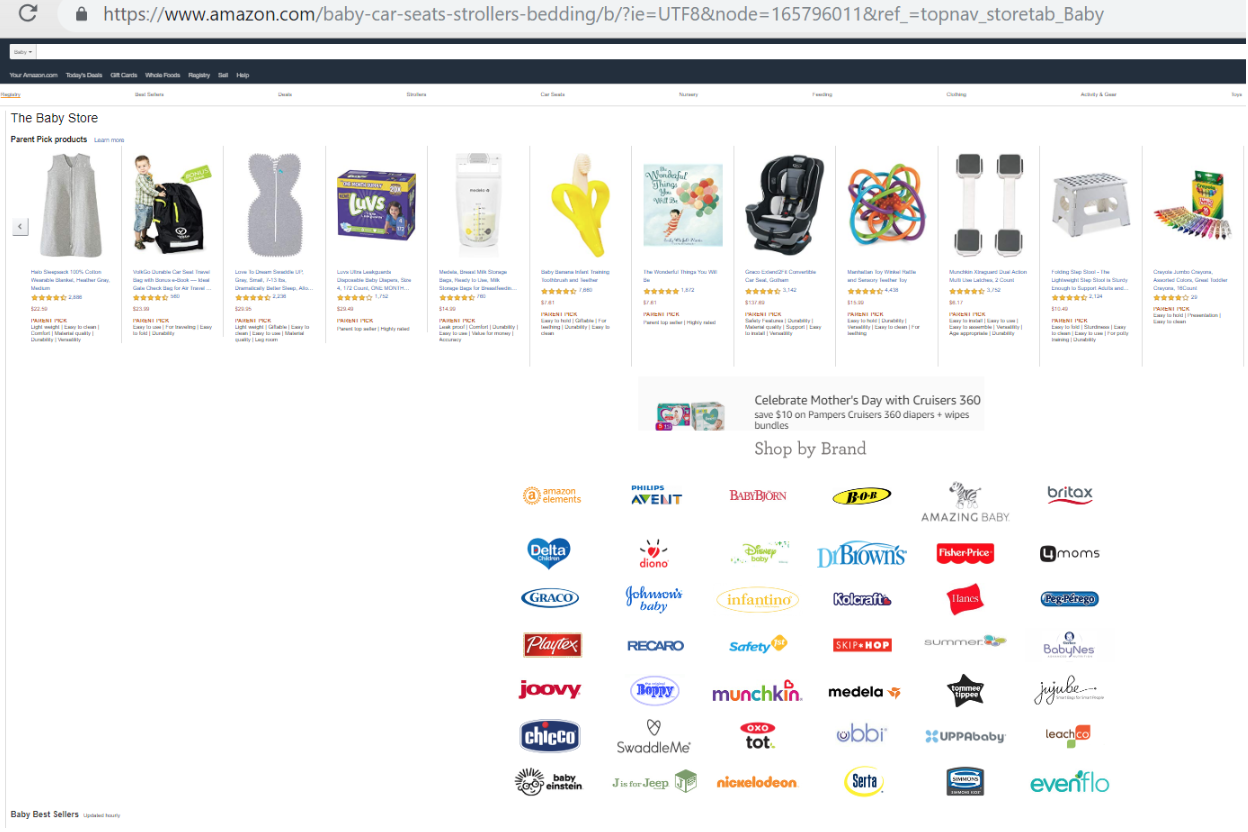
Target highlights only two products, has category links within the page and can only find brands as a part of the faceted navigation.
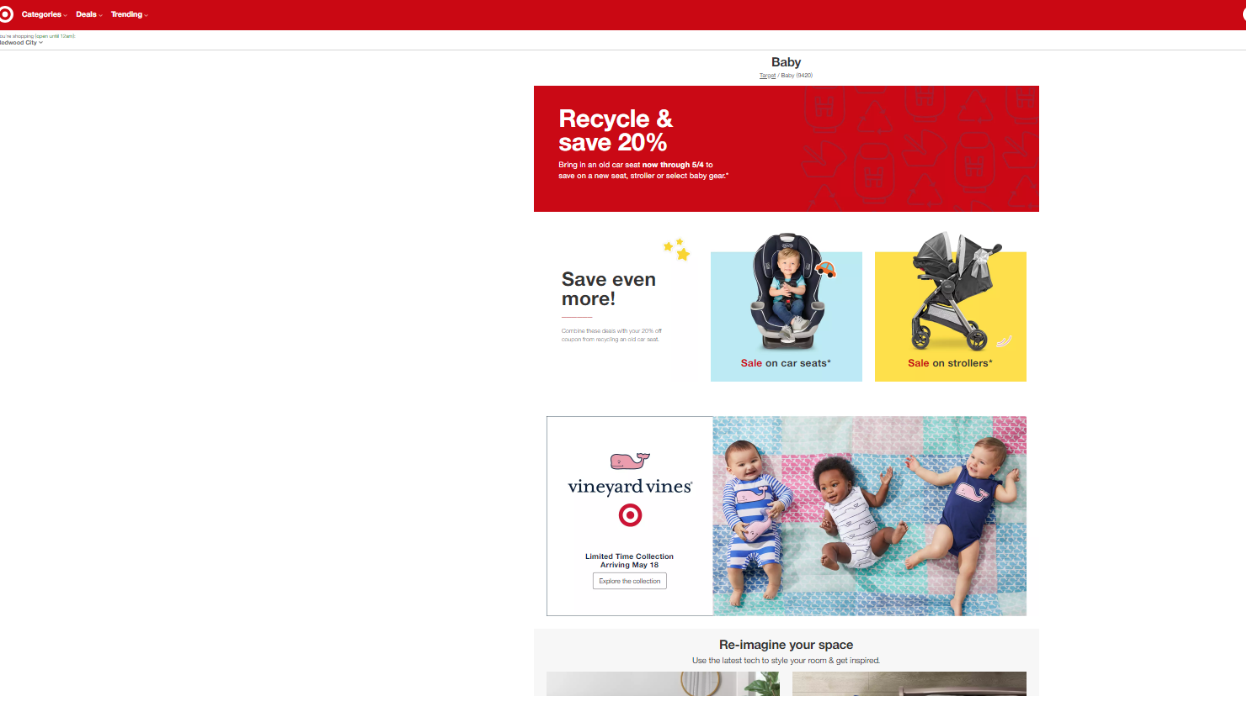
Amazon’s best in class site architecture is also a key driver in their very clean URL generation. Compare these 4 URLs for the baby category.
- Amazon: https://www.amazon.com/baby-car-seats-strollers-bedding/b/?node=165796011
- Walmart https://www.walmart.com/cp/baby-products/5427
- Target https://www.target.com/c/baby/-/N-5xtly
- Overstock https://www.overstock.com/Baby/35/store.html
From Amazon’s URL it is crystal clear what to expect while the others leave something to be desired.
Cross-linking
An underpublicized secret of SEO is that internal links will do more to increase organic visibility than building more external links. Building upon Amazon’s superstructure of taxonomy, the site uses hierarchical connections to create related links that are actually related links.
A search crawler dropped on any page will be led into a near endless of stream of pages that have a connection to the previous page. This negates any risk of there ever being an orphaned page and it helps create or support the ontology-driven algorithm that powers Google’s intent matching engine.
While cross-linking is a key component of any web property hardy anyone gets this right like Amazon. Compare the cross-linking of the iPhone on Amazon vs Best Buy.
Page layout
Finally, Amazon is able to pull together the elements of content and related links and build a page that search engines are easily able to process. Category pages build the brand cross-links right into the page so they seem as natural as possible and don’t need to rely on faceted side navigation like other ecommerce sites.
On product landing pages they blend the perfect mix of product description, rich content such as media, Q&A and user reviews. The immediate landing page has all of the most important content without anything hidden in a collapsible box like other sites do, and the UGC which has lower search value is included at the end of the page.
Compare how Amazon adds UGC vs target.com which hides the Q&A.
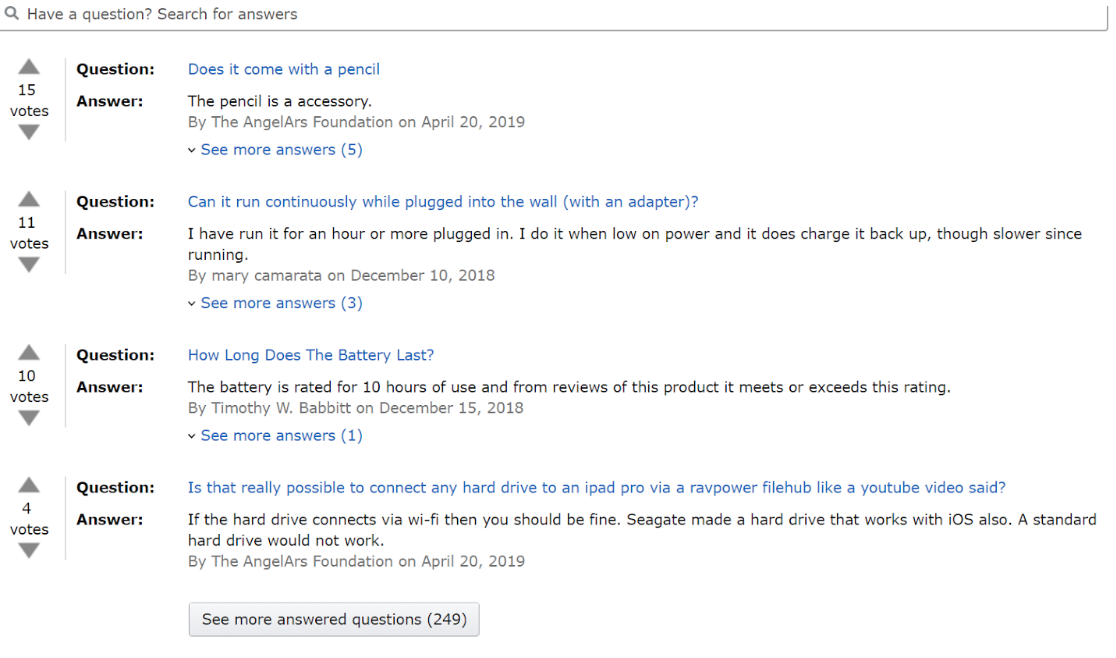
Vs. Target

Summary
If you want to build SEO like Amazon, there is a very clear playbook you can follow. The most important lesson to take from Amazon is to embed SEO into the foundation of a website. Without a doubt, URL’s, titles, headlines, and product descriptions need to be generated and placed without errors.
As evidenced by Amazon’s success over the last two decades, it is worth taking a step back to build a taxonomy so clean that every product has a perfect home. Amazon created niches of niches and this is a great best practice to follow.
Using this clean taxonomy, maximize on cross-linking to the best that a site’s design can handle. Show related products, related categories, and even competing categories. A broom obviously might be paired with a dustpan, but only will a clean taxonomy allow one to make the connection to a mop.
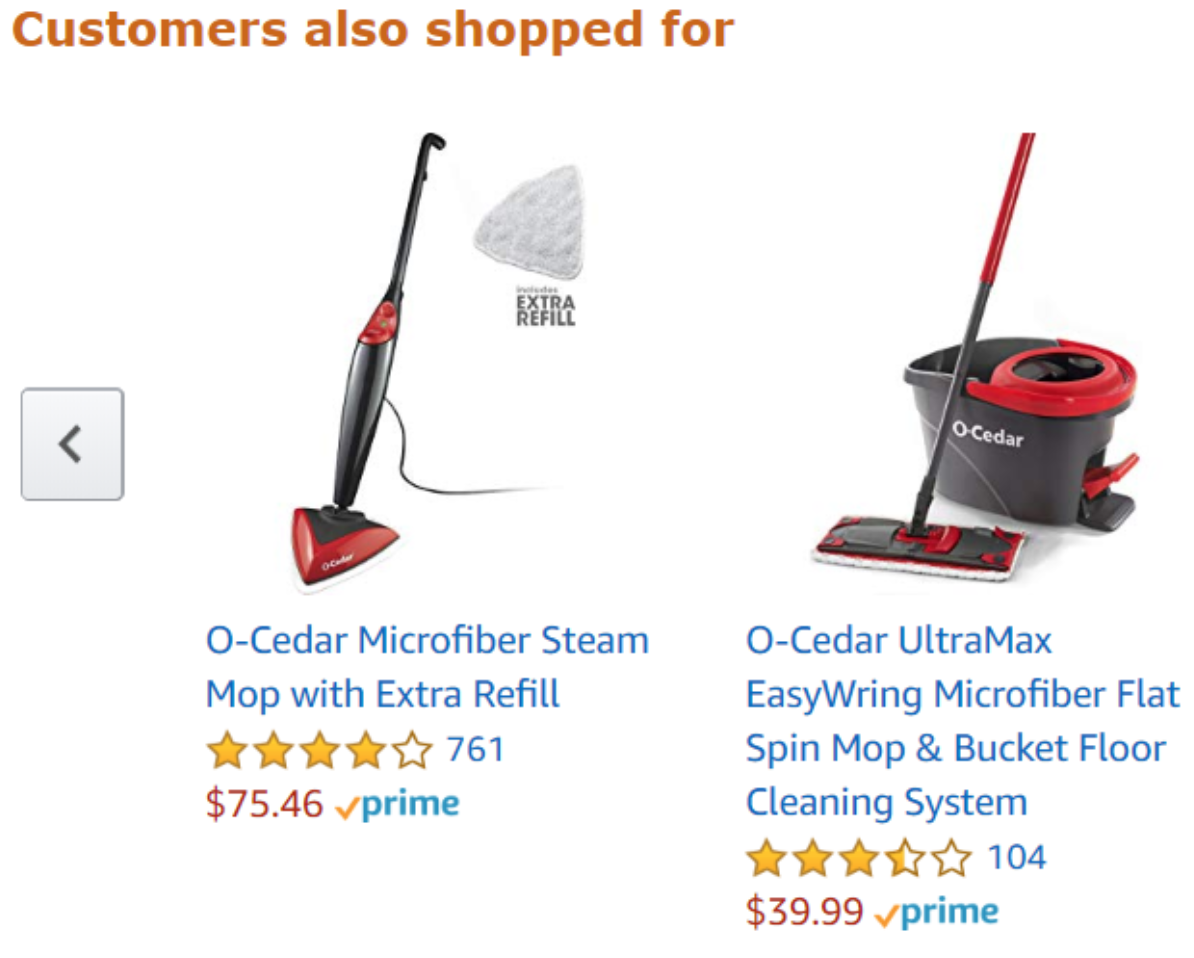
Ecommerce content presents many challenges as the content is written by the manufacturer and some of them aren’t very good at writing. At the same time, this content is available to every retailer that sells the same product. Rewriting product descriptions is possible but it very not scaleable.
Regardless, Amazon is able to take that content and make it be a very small part of the page. By adding elements that are unique to Amazon, using comparisons, Q&A, reviews and related products, they are able to build a product page that is substantially different from their competitors.
In any vertical, this should be possible too if the effort is invested to gather more related content whether from users or structured data. With this content, the pages should be built in a way that is rich for search engines, but doesn’t get in the way of a conversion. The specifics of this recipe will be different for every individual vertical.
Why you should start now
In the year 2019, we think of Amazon as the store that sells everything from food to high-end jewelry, and it is the default ecommerce store for anything we want dropped on our doorstep in a couple of days. However, it wasn’t always like this, Amazon invested heavily in SEO while their competitors focused on other channels.
This investment in SEO is one of the key drivers for Amazon’s domination of Google’s search results for every product query one might type into a search box. Their top rankings lead to a virtuous cycle and cement the view in the searcher -soon-to-be shopper that Amazon is the destination for everything.
The good news is that while Amazon might have a really solid defensive moat on ecommerce that their retail competitors have a hard time penetrating, they don’t actually own the right to top rankings on Google for every shopping category.
Amazon is great at being the world’s best ecommerce platform and this is a perch that it would be hard to seize from them. However, Amazon is not Google and they don’t own their search rankings.
It may be hard to displace Amazon from products where they already rank #1, but at the same time following these best practices it should be relatively easy to keep them from getting the positions they don’t already have.
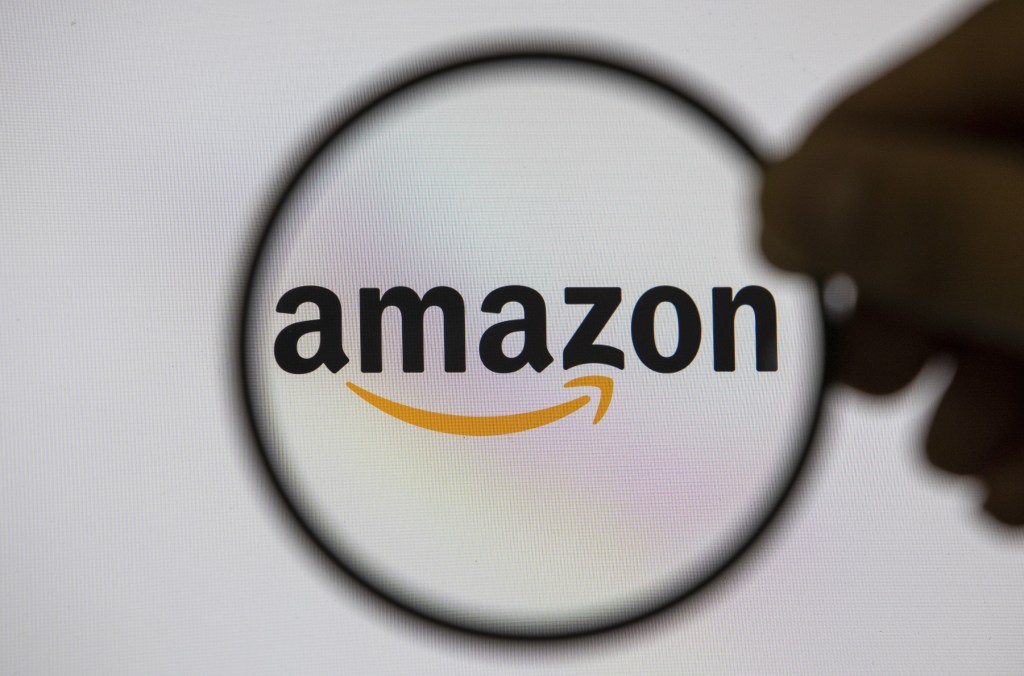
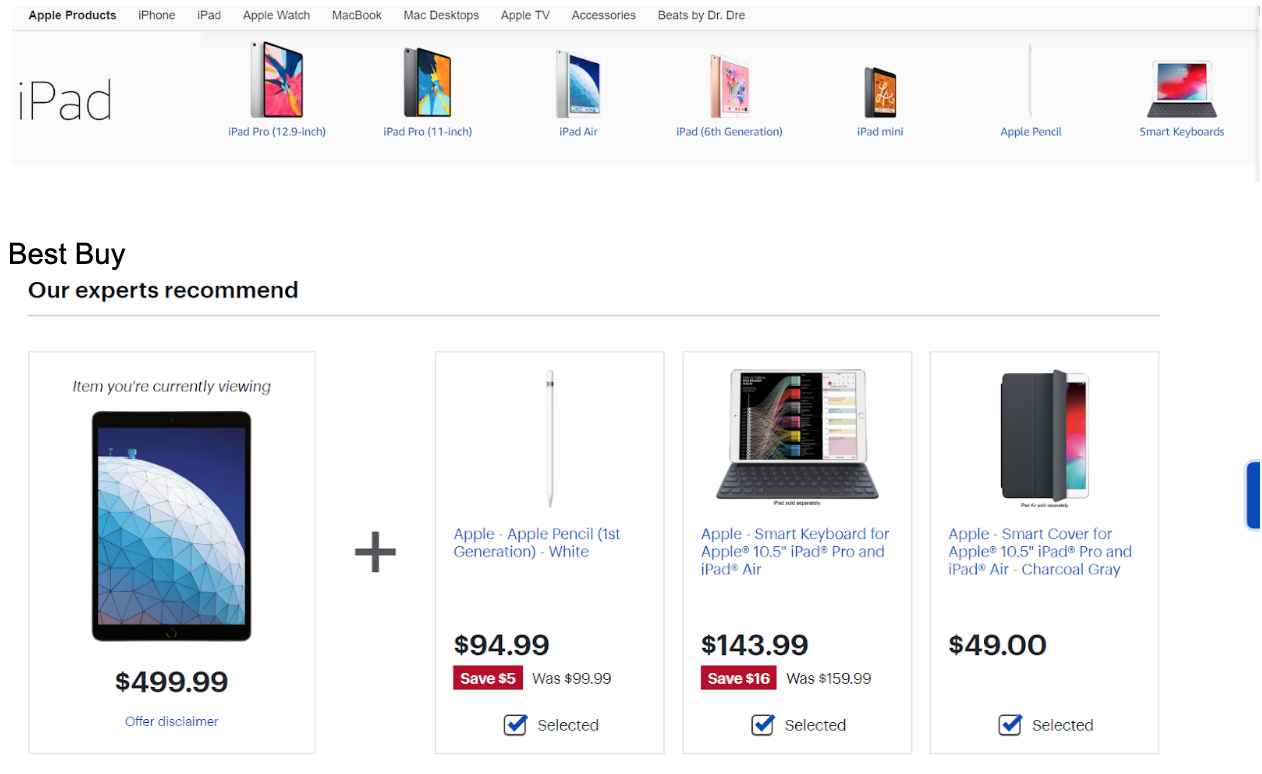






























Comment